700C and 650B have established themselves as the two gravel bike wheel sizes to choose from. What exactly are the differences and which size is right for you? Our article addresses wheel size myths, prejudices and the advantages and disadvantages of both.
Before taking a closer look at the advantages and disadvantages of 700C and 650B wheels, we should clarify the various terms and standards. In the past, with the growth and the accompanying professionalisation of cycling, many countries defined their own wheel size standards. As is so often the case, today the result is a confusing mess of various size and type designations, some of which have been adopted without question despite the continuous evolution of the sport. It’s not surprising that we’re still relying on completely outdated standards that have little to do with current reality, leaving the unsuspecting cyclist struggling to make sense of it all.

In contrast to a mountain bike with thousands of settings and adjustments, everything on a gravel bike comes down to the correct tire choice and the differences between options can be extreme! Ultimately, in this article we’re not discussing the differences between wheel sizes but the differences between wheel-tire combinations, that’s to say a comparison of the common 700 x 40C and 650 x 47B gravel configurations.
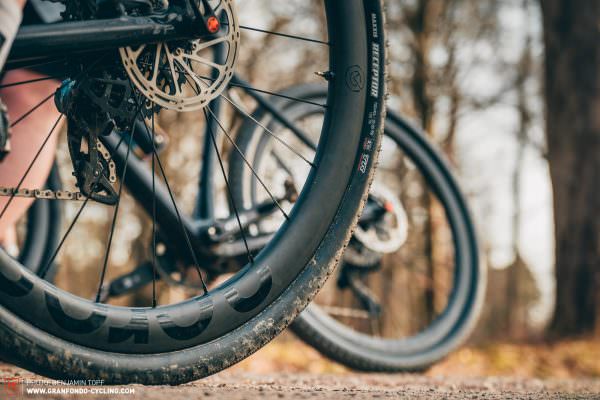
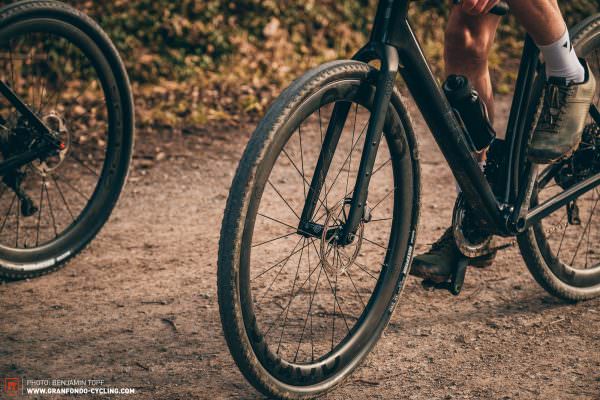
Tire measurement systems explained
Let’s start with the classic system of measurement which refers to the tire’s outer diameter. This is where the confusion starts: the most commonly used French system consists of a metric number and a letter, such as 700C. The number, in this case 700, indicates the tire’s outer diameter in millimetres and the letter represents the nominal rim diameter. In this case, the nominal rim diameter refers to the bead seat, where the tire sits on the rim. Besides 700C from the road bike sector, 650B is the most common bicycle wheel size – no doubt very familiar to mountain bikers and gravel fans. To specify the tire width, another two-digit number can be specified in front of the letter, giving you all the important parameters. As such, a 700 x 25C tire should have a width of 25 mm when fitted and inflated. Along with the French standard explained above, the other common standard relies on inches. For example, a 28 x 1.4″ tire has an outer tire diameter of 28″, about 711 mm, and a width of 1.4″, which corresponds to just under 36 mm.
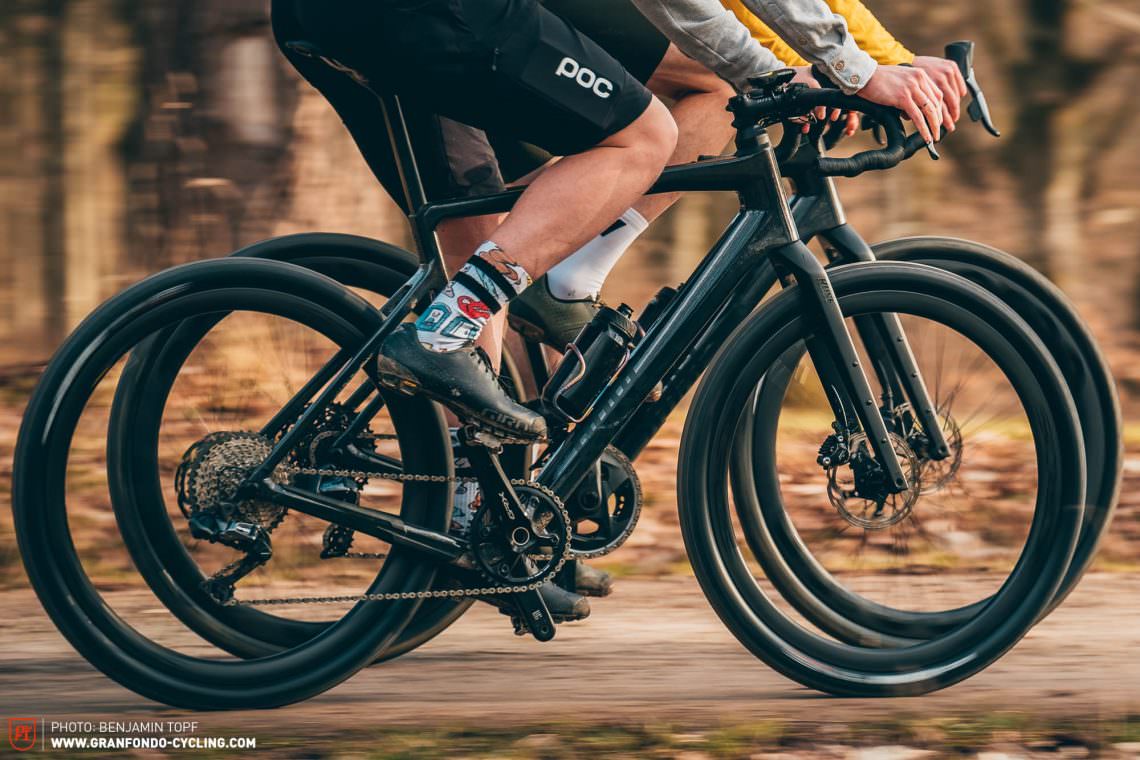
In contrast to a mountain bike with thousands of settings and adjustments, everything on a gravel bike comes down to the correct tire choice and the differences between options can be extreme! Ultimately, in this article we’re not discussing the differences between wheel sizes but the differences between wheel-tire combinations, that’s to say a comparison of the common 700 x 40C and 650 x 47B gravel configurations. Strictly speaking, the 700C and 650B size designations are technically wrong, though we’ll explain why in further detail below. In the meantime, we will continue using, like the rest of the industry, throughout this article!
A lack of agreements between tire and rim manufacturers has meant that the outer rim diameter and the width of the rim base have never really been standardised. At some point, we started seeing 700 x 25C tires that measured only 24 or even 23 mm wide when inflated on the rim. To put a stop to this and to introduce an up-to-date system, the industry introduced the ETRTO* notation standard. It contains two pieces of information about the tire width and the inner diameter of the tire, the latter being identical to the nominal rim diameter. Contrary to popular belief, the nominal rim diameter isn’t the outer rim diameter, but the diameter of the bead seat on which the tire sits. Therefore, a tire with a size of 45-622 is 45 mm wide and has an inner diameter of 622 mm, which corresponds to 700 x 45C in the French system. Since the “700” refers to the outer diameter of the tire, as we learned above, it becomes clear why this designation is technically incorrect. Considering the immense differences in tire volume, a tire with a width of 25 mm (i.e., 700 x 25C) will never have the same outer diameter as a tire with a width of 45 mm (i.e., 700 x 45C). The actual difference between these two wheel-tire combinations is a whopping 29 mm, though this also depends on the specific rim and tire used.
*European Tyre and Rim Technical Organisation
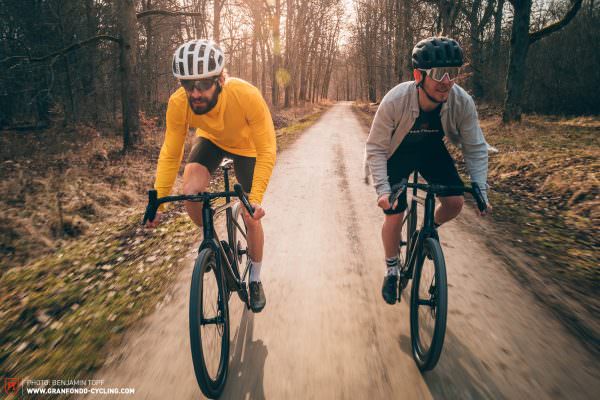
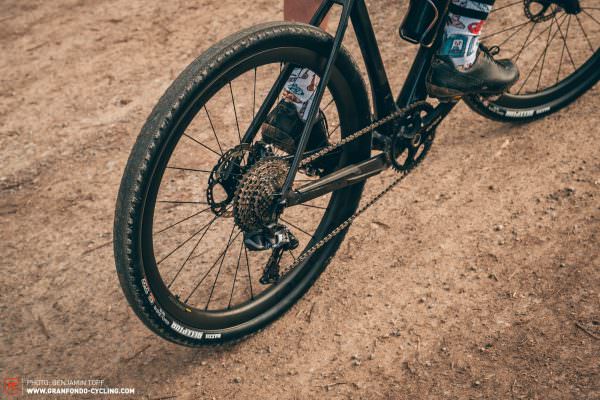
Similarly, a tire specified as 50-584 in the ETRTO system is equivalent to 650 x 50B in the French system. To add to the complications, tire manufacturers still haven’t agreed on how to reconcile these different systems. While Schwalbe traditionally assign 40-622 to 700 x 38C, Pirelli stick to 700 x 40C. As you can see, the industry is yet to find a solution.
You can spend a lot of money on lighter or stiffer components to tune your gravel bike. However, if you’ve got the wrong tires, it’s a wasted effort and you’re bound to be disappointed with the result. Ultimately, the bike and rider are connected to the ground by two patches of rubber about the size of a 10 cent coin and the importance of this should never be underestimated. As such, we would be remiss if we didn’t wholeheartedly recommend reading our current gravel tire group test.
Rim and tire widths in detail
ETRTO have created a table that relates a given inner rim width to the recommended tire size for it.
| Inner rim width [mm] | tire width recommended by ETRTO [mm] |
|---|---|
| 13 | 18–25 |
| 15 | 23–32 |
| 17 | 25–50 |
| 19 | 28–57 |
| 21 | 35–62 |
| 23 | 37–64 |
| 25 | 44–64 |
| 27 | 47–64 |
| 29 | 54–64 |
Admittedly, ETRTO recommendations are relatively conservative. For example, in the 700C road world, several manufacturers now offer rims with an internal width of 23–25 mm intended to be used with 28–32C tires. Nonetheless, the table provides a useful guide, but it’s also important to note that mounting the same size tire on rims with different internal widths will also impact the “real-world” tire size. For example, according to ETRTO, you can mount a 57 mm wide tire on any choice of rim with internal widths ranging from 19 to 29 mm. As a rule of thumb, every 3 mm of additional rim width translates to 1 mm of additional tire width, meaning that the same tire will measure differently wide depending on what rim you put it on. In addition, different tire constructions allow the tire to expand more or less with increasing air pressure. As such, the tire volume can vary depending on the model, even if the specified size is the same. Depending on the rim, you may or may not be able to fit a tire on your bike even if the claimed tire size is within the tire clearance specified by the frame manufacturer. Regarding tire clearance, it should also be noted that your wheels twist and deform when braking, accelerating and cornering, which can be very useful for cornering traction and comfort. However, if you have minimal clearance between your tires and frame when the bike is stationary, the tires will almost certainly rub against and potentially damage your frame while riding.
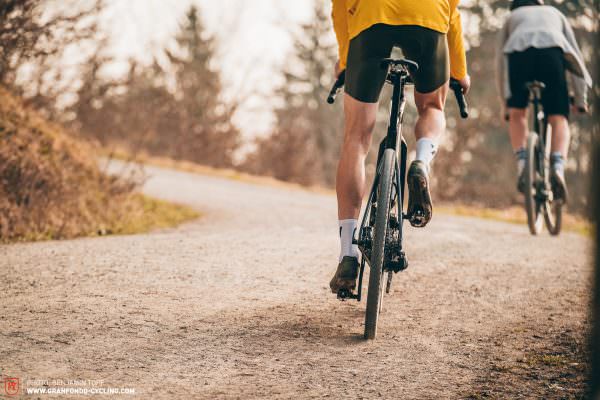
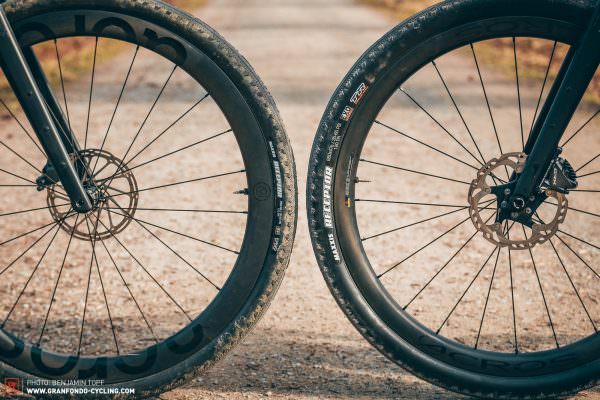
As you may have noticed, it doesn’t make sense to compare just 700C and 650B wheels. The result wouldn’t mean much without also taking width into account an equally as important parameter. That’s why we will compare the two most common wheel and tire combinations: 700 x 40C and 650 x 47B, looking at the advantages and disadvantages of each and which is best suited to which type of rider. For this article, we’ll be comparing a 650 x 47B MAXXIS Receptor on an Acros gravel carbon wheelset with a 700 x 40C MAXXIS Receptor on an Acros allroad disc carbon wheelset. As you can see below, the difference in the outer diameter of the tires is 30 mm. A pressure increase of 1 bar, or approximately 15 psi, increases the width by 0.5 to 1.0 mm, depending on the tire.
| Wheel size | 700C | 650B |
|---|---|---|
| Wheelset | Acros allroad-disc-carbon-laufradsatz | Acros gravel-carbon-laufradsatz |
| Inner rim width | 21 mm | 24 mm |
| Wheelset weight | 1,352 g | 1,443 g |
| Tires | MAXXIS Receptor 700 x 40C | MAXXIS Receptor 650 x 47B |
| Rim diameter | 622 mm | 584 mm |
| Puter tire diameter | 708 mm | 678 mm |
| tire width at 3 bar or 44 psi | 42 mm | 48 mm |
| tire width at 2 bar or 29 psi | 41.5 mm | 47 mm |
| tire width at 1 bar or 15 psi | 41 mm | 46 mm |
700C – A false declaration?
With a few exceptions, 700C has long established itself as the standard size for road, gravel and cyclocross bikes. As a result, a 700C wheelset is more likely to be compatible with the other road or drop-bar bikes you might have in the basement, allowing you to swap out wheelsets. For our wheel size comparison, we mounted a set of 700 x 40C MAXXIS Receptors on Acros’ allroad disc carbon wheelset. The rims have an internal width of 21 mm, which is representative of modern gravel rims. Upon measuring the wheels, it soon became apparent that the only 700 we would find would be printed on the tire sidewall. With a diameter of 708 mm, the tire is a whole lot larger, and that is by no means due to this specific combination. All the gravel bike wheels in our editorial office have diameters over the specified 700 mm. You will rarely find a 700C wheel with an outer diameter of 700 mm. The only consistent value across the board is 622 mm, which is the inner diameter of the tire (aka nominal rim diameter) specified by ETRTO.
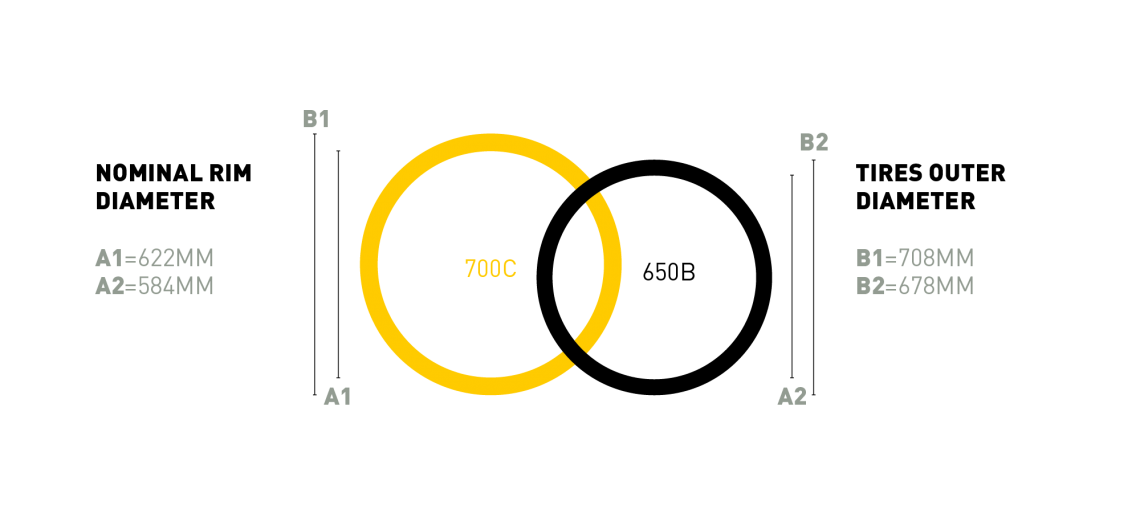
650B – On the rise
Together with large 29ers, 650B has mixed up the mountain bike scene in recent years, pushing the longstanding 26″ standard to the fringes. But 650B wheels didn’t stop there, also taking hold in the world of drop bars and increasingly featuring on the latest gravel bikes. The most striking aspect is the width of the tires: you will rarely find models that are narrower than 650 x 45B, typically ranging from 47 to 50 mm. As such, it doesn’t come as a surprise then that the 650B wheelset from Acros, their gravel-specific carbon wheelset, has an internal width of 24 mm to provide sufficient support for the wider tires. To keep the conditions similar and produce repeatable results, we fitted the same MAXXIS tire model here, though a 47 mm model. When you look at the measured outer diameter of 678 mm, you can see that the deviation from nominal size (650 mm) is even more pronounced than with the large 700C version. Here too, the only size that you can rely on with every 650B tire is the inner diameter of 584 mm. That left us asking, how big is the difference between these two wheel combinations really? Find out below.
700C vs 650B – How much does it affect frame geometry?
Using the system based on inches, the difference in diameter between 700C/28” and 650B/27.5” is just 0.5”, which is equivalent to 12.7 mm. In reality, the difference between the 650 x 47B and 700 x 40C wheel and tire combo used for our comparison is 30 mm in diameter and 95 mm in circumference. In other words, the 40C tire will roll 95 mm further than the 47B tire to complete one full rotation, not considering external factors and different tire pressures. That’s not really a huge difference, which only seems all the smaller when you consider the diameter or radius and the variation in where the wheel-tire system sits between the seat- and chainstays. So how come you’re able to fit 650B wheels and tires in the same frame if they’re that much wider? You’ll find the answer by taking a closer look at the chainstays. On most bikes, they spread as they move away from the bottom bracket and are therefore able to accommodate a significantly wider tire only 15 mm further towards the axle, the difference in radius between our two tires.
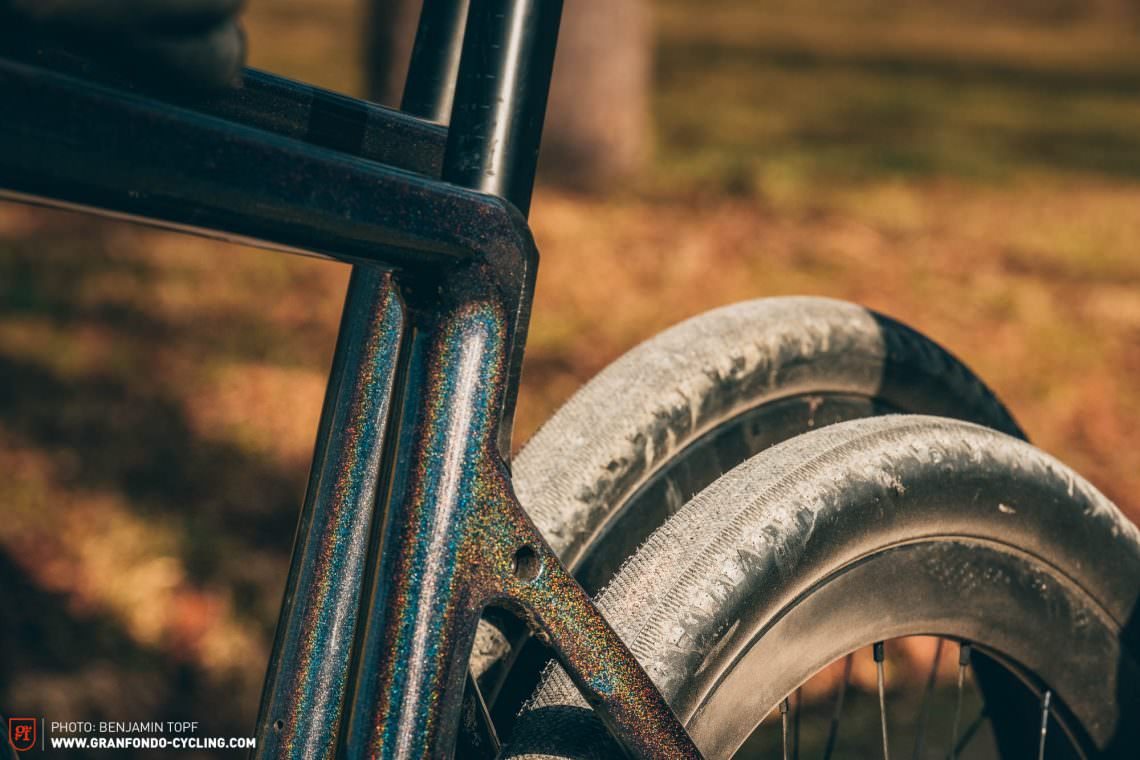
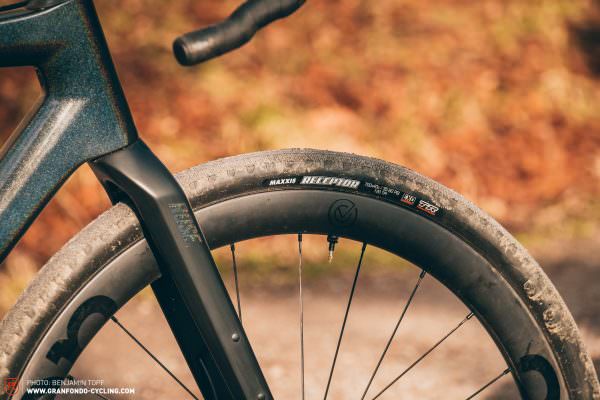
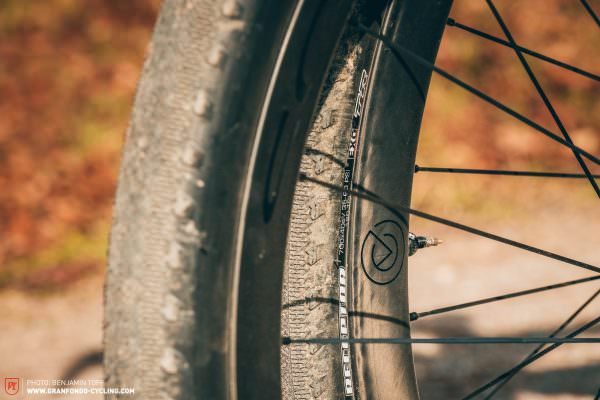
Of course, a smaller diameter wheelset also impacts the bike’s geometry. If the diameter differs by 30 mm, the same bike is 15 mm lower to the ground with the 650B wheelset than with the 700C wheelset. With a smaller radius, the axles are lower. This doesn’t take into account the fact that wide 650B tires can be run at a lower pressure than their skinny 700C counterparts, which means they deform more, dropping the bike even further – approximately 2 mm according to our measurements. One advantage of a lower bike is a lower centre of gravity, which has a positive effect on handling through corners. However, if you spend a lot of time off-road, you’re much more likely to clip your pedals on the ground or get them caught on obstacles when riding with 650B wheels. Corners that you can pedal through with 700C wheels will see you hitting the ground with a 650B setup. That said, gravel riding is about so much more than riding rough mountain bike trails at the limit on a drop bar bike and a lack of ground clearance is unlikely to be a common complaint for most of us. Gravel riders spend most of their time on gravel, forest and meadow paths, as well as paved roads. The 650 x 47B concept can offer many advantages, as we will discuss in more detail below.

Other important considerations when it comes to geometry are the fork offset and trail. The fork offset describes the perpendicular distance between the front wheel axle and the steering axis. The steering axis is the imaginary line that runs through the centre of your head tube. The trail value indicates the horizontal distance between the point where the tire contacts the ground and the steering axis intersects. The greater the offset, the shorter the trail, and conversely, the longer the trail, the shorter the offset. For the purposes of this article and to understand both wheel concepts, it is important to note that wheel size also influences the trail. The larger the wheel and the higher the front wheel axle, the larger the trail. As such, switching from 700C to 650B wheels results in a shorter trail. Shorter trail makes the bike’s handling more agile and playful, which can also be interpreted as nervous and difficult to control when pushed to the extreme. A longer trail leads to increased composure and stability, or, in extreme cases, sluggish steering.

What are the pros and cons of wide tires?
Our test configuration with MAXXIS Receptor tires is an accurate representation of the current gravel tire trend: a narrow 700 x 40C tire is shrunk to 650B and increased in width from 40 to 47 mm. This not only results in a wider tire but also in higher volume. It isn’t surprising that the 650B tire weighs almost 60 g more than its big brother, requiring more rubber to cover the bigger surface area. We’ve illustrated the differences between each of the wheel and tire combos in the following table:
| 700 x 40C | 650 x 47B | |
|---|---|---|
| Tire weight | Lower 412 g – tire outer diameter only 4.4% larger |
Higher 471 g – tire is 17.5% wider and more material is used |
| Tire pressure | Higher to avoid punctures |
Lower for more comfort and traction, punctures are less likely because of the tire’s increased “travel” |
| Tire profile | Lower requires a higher tire pressure to avoid punctures, resulting in less comfort and control |
Taller with more “travel” letting the tire deform around obstacles resulting in more comfort, traction and shock absorption |
| Puncture protection | Less more likely to hit the rim |
More less risk due to higher volume and more “travel” |
| Contact patch | Smaller tire is significantly narrower and the contact patch is only marginally longer |
Bigger therefore, more traction and better braking performance |
| Rolling resistance | Less …on compacted surfaces as the tire deforms less due to the higher pressure |
Less …on rough surfaces as it deforms to roll “through” rather than over obstacles |
You might be wondering why we didn’t include a row for vibration damping. Here, wheel size and tire width are less important than the casing of the tire, which should be stable and well-damped so that it absorbs small vibrations and bumps instead of bouncing over them. If you’re currently looking for a new gravel tire for your bike, we strongly recommend reading our gravel tire group test.
With that introduction, we’ve laid the foundations to delve deeper into the subject and continue with our wheel size comparison. Below, we will discuss the most prevalent gravel tire hypotheses, refute myths and take a closer look at existing prejudices.
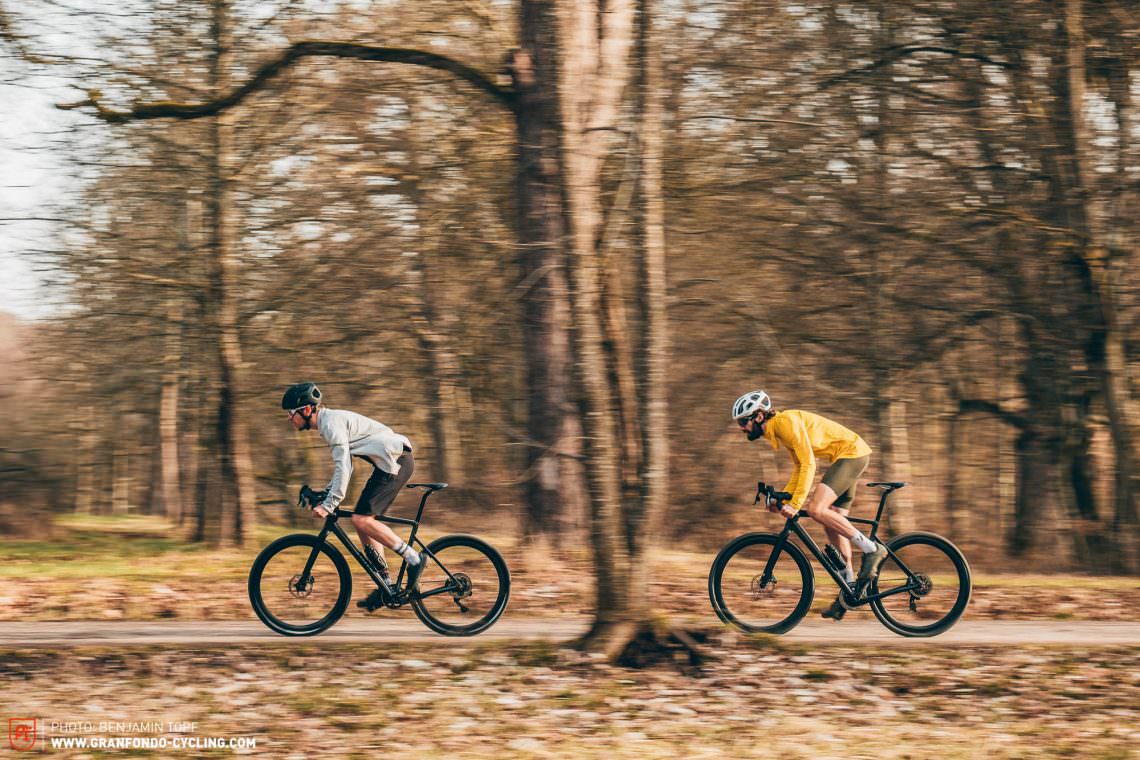
Hypothesis: 650B tires can accelerate faster and are more agile when sprinting
650B wheels are smaller in diameter than 700C wheels with an inner tire diameter exactly 38 mm less (622 mm vs 584 mm, see table above). Common sense or rudimentary physics tells us that it is easier to accelerate a very small wheel than a very big one, so this hypothesis should hold true. Delve a little deeper into the world of physics and the laws of nature, and you will quickly come across the moment of inertia concept. The inertia of the larger 700C wheel and tire must be higher because the tire and rim are further away from the axle and also weigh more. But what is the reality? Are 700C wheels really that much harder to bring up to speed?
As you saw in the tables above, the 650B wheel and tire combo is by no means lighter than its 700C counterpart. Due to the wider tires, the rim also has to be wider to support the tire. This not only results in a heavier tire, but also a comparatively heavier rim and can result in a heavier wheel overall. The weight saving due to the shorter spokes is negligible. Sure, a 650B wheel with an identical hub, identical spokes and identical rim and tire width would be lighter compared to the 700C model but this wouldn’t give you much of a real-world advantage, rendering it pointless. In addition, the 650B tire isn’t only wider but also taller. This further reduces the difference between the two diameters, decreasing the difference in inertia between the two wheel setups. Giving this hypothesis the final knockout blow, the more voluminous 650B tire requires more sealant for the same level of puncture protection, which adds more weight still and further reduces the difference between the respective rotating masses.
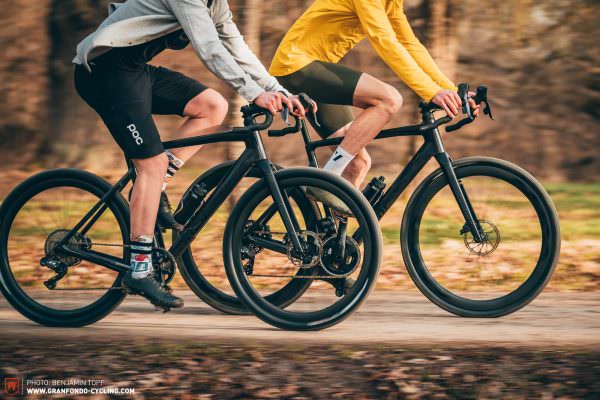
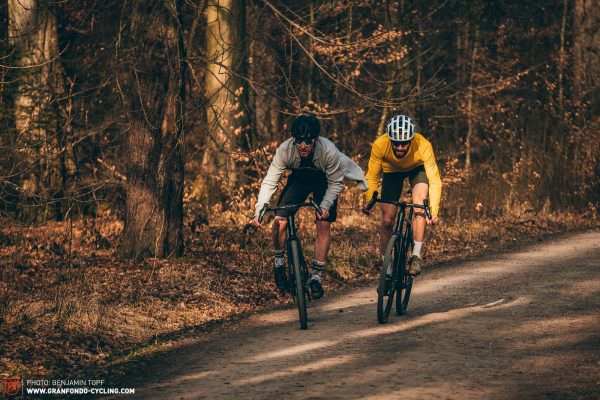
When you consider all of the above factors, it’s not surprising that we’ve never found a 650B wheel to accelerate faster in our real-world tests. Ultimately, the difference is marginal and who can claim with any seriousness that they’re able to feel a 1.04168113% difference? Depending on where you ride with either of the wheelsets, the amount of mud stuck to your tires will be more significant, with the difference in acceleration between 700 x 40C and 650 x 47B negligible.
However, 650B is at a big advantage when you require maximum grip and traction, which may indeed help you accelerate quicker. Due to the design, 650B tires require less pressure, which, in combination with their increased width, gives them a larger contact patch. The larger the contact patch, the more traction the tire can generate and the better the power transmission on rough, damp or otherwise challenging terrain.
Hypothesis: a large 700C tire rolls over obstacles more easily and is therefore the better tire for off-road use
In the world of mountain bikes, 29″ wheels have dominated the market while 26″ wheels have largely vanished from the scene. That can’t be a coincidence, can it? The big wheels are claimed to roll over small obstacles such as rocks and roots more easily and lose less momentum in the process. When a wheel meets an obstacle, it forms a virtual ramp. You can picture it as a triangle, the three sides of which are formed by drawing lines between the top of the obstacle where it meets the tire, the contact point of the wheel on the ground and the bottom of the obstacle. To get over the obstacle, the wheel has to move up and over the obstacle at the angle between the contact patch and the top of the obstacle. The steeper this angle, the more difficult it is for the wheel to roll over it. A larger wheel moves the contact patch on the ground away from the obstacle, reducing the angle and thus making it easier for the wheel to get over. Even if a 28″ (700C) wheel only increases this distance by a few millimetres compared to a 27.5″ (650B) wheel, depending on the height of the obstacle, this makes a significant difference when multiplied by thousands of little obstacles, resulting in less rolling resistance and less exhaustion. The higher axle of a 700C wheel also ensures that the rider and the bike’s centre of gravity are lower relative to the axles compared to a bike with 650B wheels, which stabilises handling.
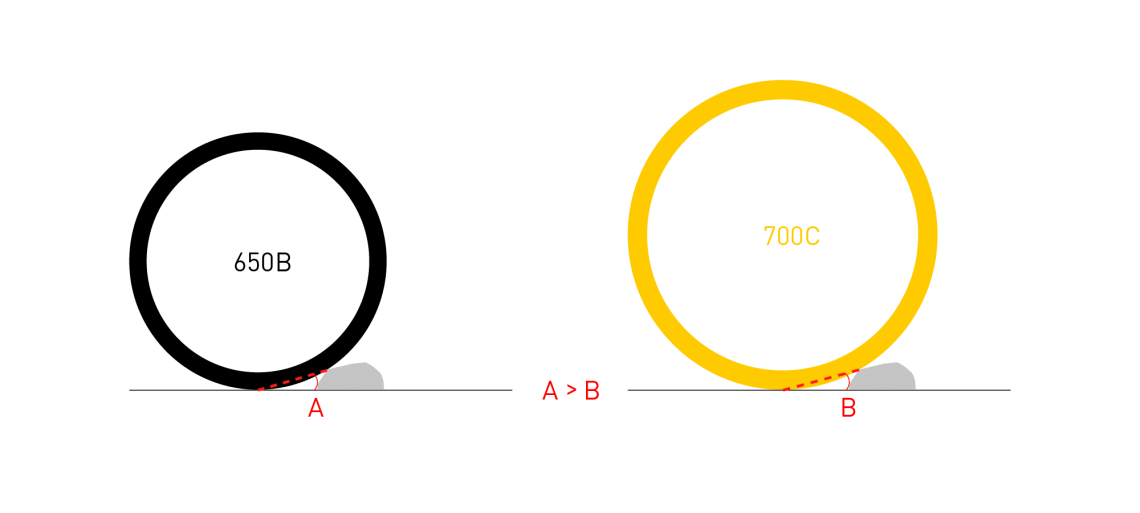
That’s the physics but what are the differences in reality, when you’ve suddenly got a whole lot of other factors to take into consideration? We’re not using solid rubber tires and, instead, they’re able to deform to offer a form of suspension. A larger 700C tire has less volume, so it doesn’t have as much “travel” as a higher volume 650B tire, which is why it requires a higher pressure to avoid damaging the rim or tire. While a 700C tire smacks into an obstacle, the 650B tire is better able to deform around it and conserve forward momentum. The rougher the surface, the more important the tire’s width and volume. As such, it is vital to consider the type of terrain you’ll be riding on to work out which wheel and tire size is the best choice for you. To claim that 700C tires generally roll faster is false! On a perfectly smooth surface, the following applies: the higher the tire pressure, the less deformation and thus lower rolling resistance. But if you mostly ride off-road, 650B wheels and tires might be the best alternative for you. The industry has come to the realisation that smoother is faster, and a wider, lower pressure tire is better able to absorb vibrations and thus keep the rider relaxed and fresh for longer. The 650 x 47B system offers more “travel” and therefore more comfort. And when riding off-road, the lower the tire pressure, the lower the rolling resistance. This applies to gravel roads as well as loamy forest floors and meadows. Why is that? As mentioned above, a tire with less pressure is better at conforming to the terrain. It floats over obstacles and doesn’t sink into soft ground, thereby creating less resistance for the bike and rider compared to a hard tire that gets slowed down by having to move over and around obstacles. The best balance between rolling resistance and comfort depends on your preferences and you’ll have to figure it out for yourself.

Hypothesis: 650B wheels with wider and more voluminous tires are the same size as 700C wheels
A big advantage of 650B wheels compared to 700C wheels is that you can fit wider tires in the same frame. Nonetheless, a common claim is that high-volume 650B tires have the same outer diameter as 700C tires, negating any issues regarding the height of the bottom bracket and ground clearance. While a wider, higher volume tire is taller, you can’t necessarily equate the 38 mm height difference in nominal rim diameter (622 vs 584 mm) with the outer diameter of the tire, as this depends heavily on its volume. On paper, a 700 x 23C tire has the same outer diameter as a 650 x 42B model and 700 x 28C has the same diameter as 650 x 48B but this compares a 700C road tire to a 650B gravel tire. Compare a 700 x 40C and 650 x 47B setup and the former is larger. In addition, the latter, wider tire usually gets ridden at a lower pressure and therefore has more sag* than its skinnier counterpart, meaning it gets compressed more when you sit on it, also reducing its effective height by a few millimetres.
When deciding between different wheel sizes and their respective pros and cons, there are other factors to consider. A higher-volume 650B tire will be more comfortable on bumpy terrain. However, a softer tire will also deform and squirm more easily when riding through a corner, which can result in vague and undefined handling, an absolute no-go for competitive riders who demand precision. As a result, wide tires may not be the best option for your gravel race bike. A good example here is the Fern Chuck Explorer (read review here). The bike’s large and wide tires are super comfortable but they squirm when cornering hard, leaving the rider with mixed feelings.
*Sag is typically used to refer to the amount of travel used as the weight of the bike and rider compresses the suspension when stationary.
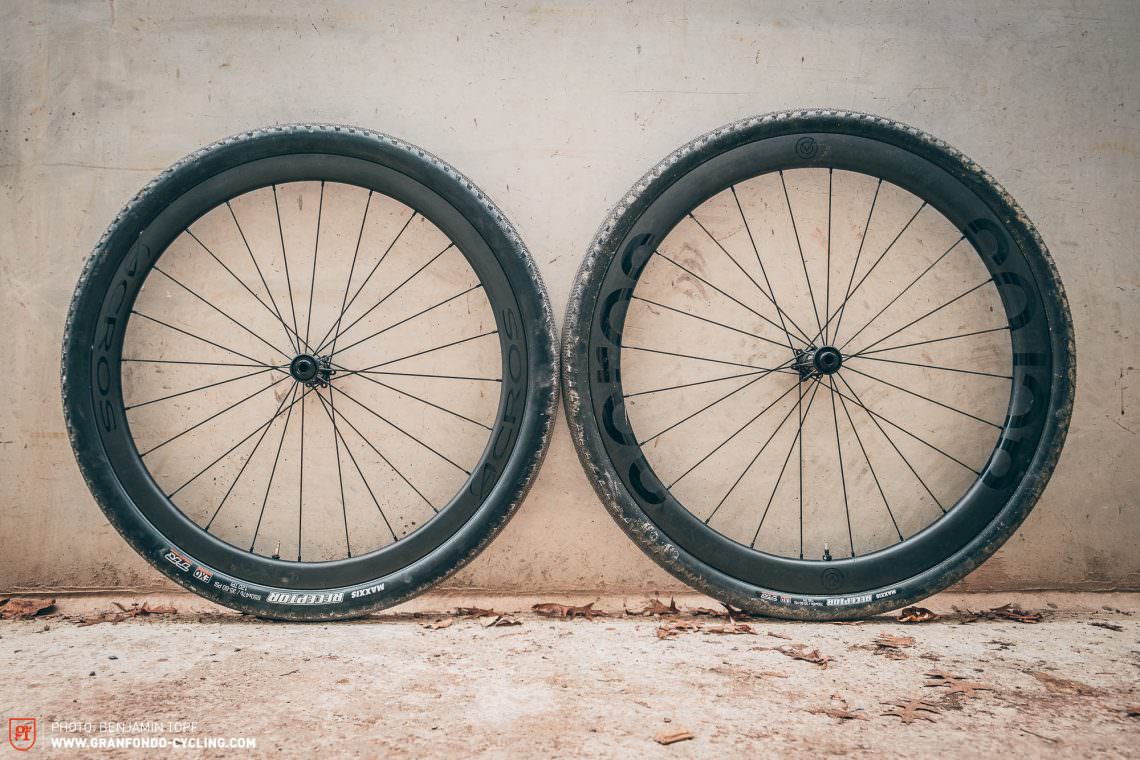
In the past, small riders could be left frustrated because the geometry of the smallest gravel bikes didn’t work or the proportions of the frame and wheels looked wrong. Several manufacturers have recognised the requirements of smaller riders and now equip their smallest frame sizes with 650B wheels, one example of which is the Canyon Grail (read review here). In this case, doing so is not about fitting wider tires for more comfort, but keeping the same as on bigger-wheeled sizes. As such, the 650B tires have to have the same volume as the 700C models for the standover height to decrease.
There are no practical advantages to smaller diameter 650B wheels per se, but big advantages to be gained from wider tires! Whether you’re a weekend warrior, adventurer, leisure rider or commuter, everyone benefits from sufficiently wide tires. For us, the sweet spot of comfort, precision and handling on varying terrain is in the range from 700 x 42C to 700 x 45C. We don’t have to win medals to earn a living. Instead, we use gravel bikes as vehicles to escape everyday life and have fun! There is a wide range of tires to choose from between 42 and 45C and modern gravel bike frames offer large enough clearances to accommodate them. However, you have to make sure that your rims are also wide enough to support them properly. We recommend an internal width of 24 mm or more to adequately support 45C tires, thus creating more of a U shape than an O shape. Many older gravel frames offer limited clearances with a maximum tire size of 700 x 40C or less. Here, 650B wheels will allow you to enjoy the advantages of wider tires despite this, the frames often accommodating models as big as 650 x 45B or even 650 x 47B.
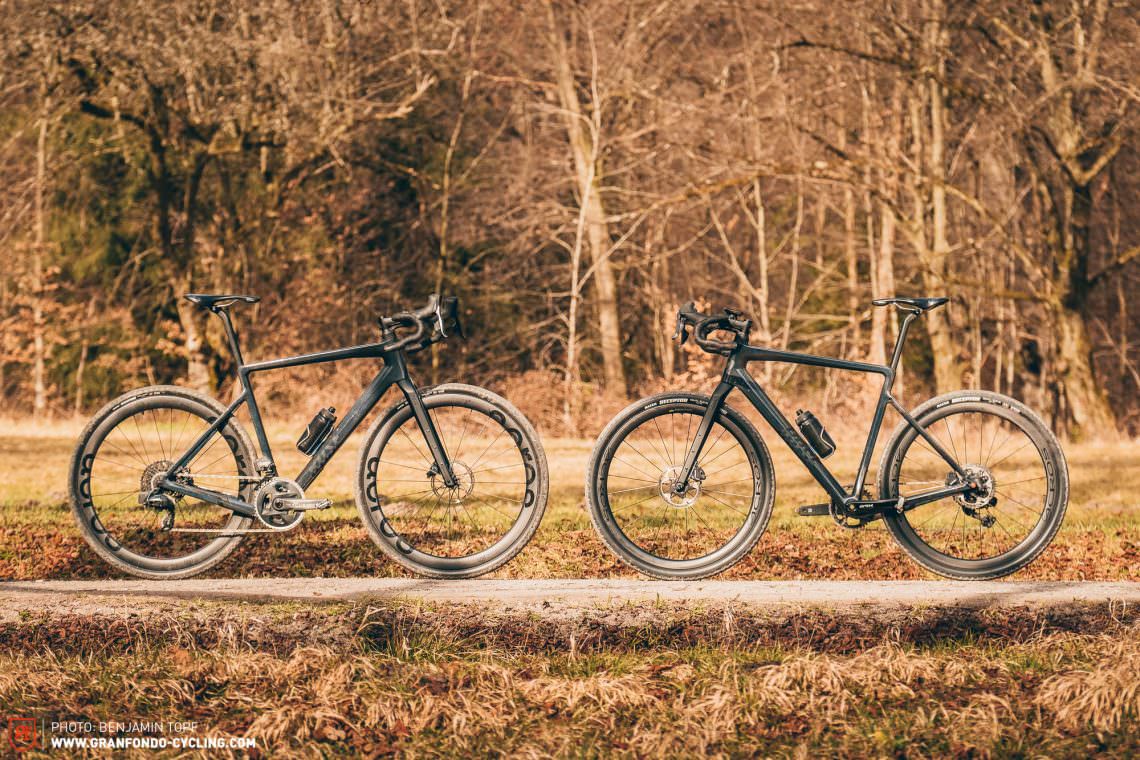
The correct wheel size for the intended use
Choosing the best wheel size ultimately depends on the intended use of your gravel bike – there are advantages and disadvantages to each size. As you may have noticed, there is no definitive answer once you look at all the details. With all the factors taken into account, it’s simply too complex to give a clear-cut answer. Individual preferences differ and the intended uses are often worlds apart. To give you a rough guideline, we’ve compiled our suggestions below, detailing which option is most suitable for which use. We divided them according to the types of gravel that we defined in our large gravel bike buyers’ guide.
Looking for speed or a spot on the podium:
Is speed everything to you and you don’t shy away from long passages on smooth asphalt? In that case, 700C wheels are the only option, offering minimal rolling resistance on perfect, compacted surfaces. However, we wouldn’t recommend skinny tires, since, as we learned above, wide tires can also be fast.
Flow trails – riding mountain bike trails on your gravel bike:
650B is the wheel size for you. High-volume 650B tires offer comfort and traction as well as agile handling, making them perfect for rough terrain.
Bikepacking, commuting or all-round gravel riding:
If your bike will accommodate them, wide 700 x 42C tires are the perfect platform for you. They offer a good balance between comfort, handling and speed, maximising fun.
Our conclusion on the differences between 700C and 650B
Ultimately, it’s not about wheel size but about the difference in volume between wheel and tire combinations. 700 x 42C to 45C are a good standard for the average rider, offering the best compromise between comfort, handling and speed. If these don’t fit your gravel bike, 650B wheels should allow you to enjoy the advantages of high-volume tires. Small riders will also find happiness with the smaller frame sizes enabled by 650B wheels of the same volume as their 700C counterparts.
More informationen about ACROS’ wheelsets and components: acros-components.com.
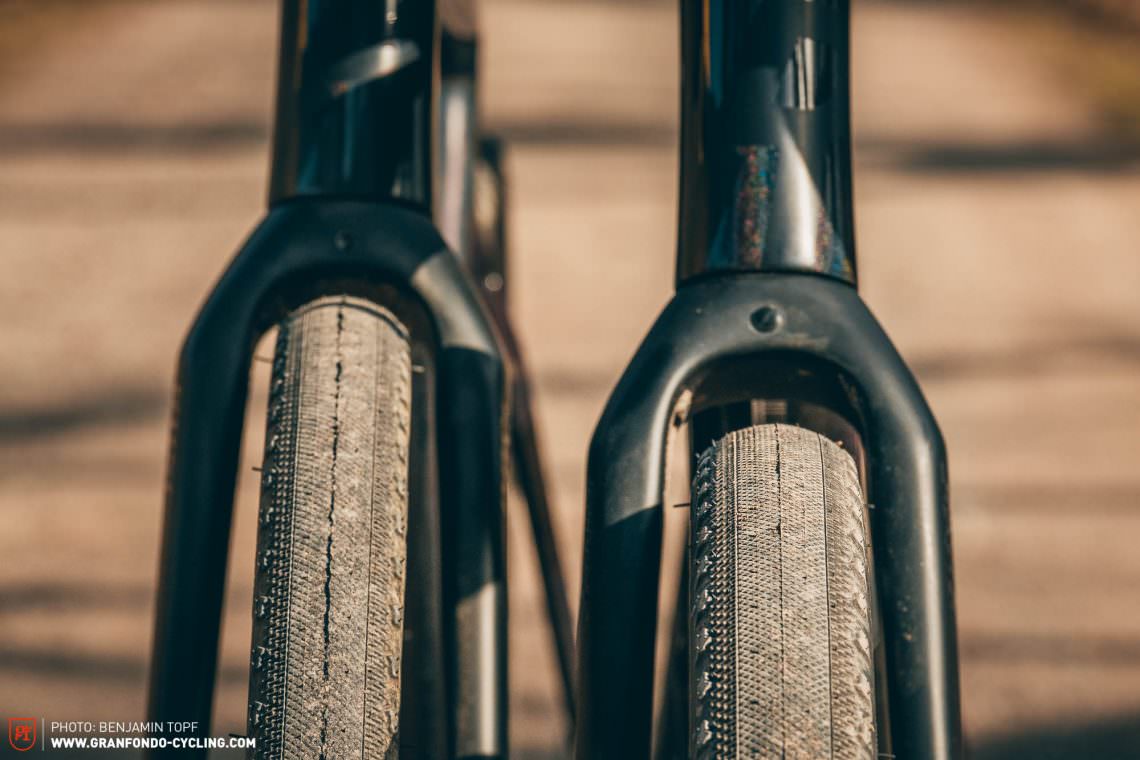
Did you enjoy this article? If so, we would be stoked if you decide to support us with a monthly contribution. By becoming a supporter of GRAN FONDO, you will help secure a sustainable future for high-quality cycling journalism. Click here to learn more.
Words: Photos: Benjamin Topf







